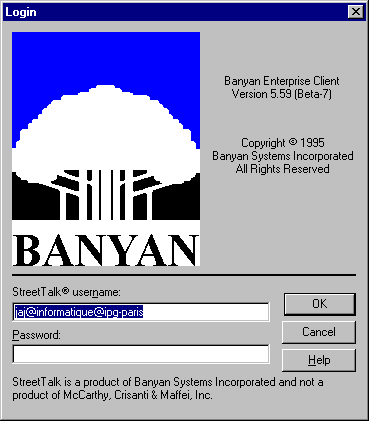VINES stands for Banyan Virtual Integrated Network Service, it was a network operating system (NOS) for building enterprise-level networks.
What is Banyan VINES?
Stands for Banyan Virtual Integrated Network Service, a network operating system (NOS) for building enterprise-level networks. VINES was originally based on a proprietary family of protocols that was derived from the Xerox Network Systems (XNS) protocol. VINES uses a client/server distributed networking architecture for allowing clients to access network resources on servers over the network.

VINES includes such features as:
- Basic file and print sharing
- A distributed directory service called StreetTalk for managing networks
- Support for the TCP/IP protocol
- Graphical administration tools
- Support for Simple Network Management Protocol (SNMP) management
VINES includes clients for MS-DOS, OS/2, Microsoft Windows, and Macintosh platforms as well as optional applications for integrating Windows NT, AppleTalk, Novell, and UNIX networks into existing VINES-based networks.
How Banyan VINES work?
VINES is built on a client/server model in which clients can make requests for services from servers on the network. The VINES protocol stack consists of five basic layers that map to the seven-layer Open Systems Interconnection (OSI) reference model as follows:
- Physical and data-link layers: VINES can operate over Ethernet, token ring, X.25, and other types of networking architectures.
- Network layer: The main protocol here is the VINES Internetwork Protocol (VIP), which is similar in function to the Internet Protocol (IP) of the TCP/IP protocol suite. VIP encapsulates data and addresses it using a 48-bit address that contains a 32-bit network number and a 16-bit host number. Dynamic address assignment and address resolution are performed using VINES servers, which are referred to as service nodes. VINES clients obtain their addresses dynamically from the nearest server on the network. Multihomed servers function as routers, and routing tables are maintained by periodic announcements from clients and servers. Other network layer protocols include an Address Resolution Protocol (ARP), an Internet Control Protocol (ICP), and a Routing Table Protocol (RTP).
- Transport layer: For reliable delivery of data using acknowledgments and sequence numbers, VINES uses its Reliable Message Service. Another service, the Unreliable Datagram Service, supports only best-effort delivery of packets. Finally, the Data Stream Service can be used to transmit large amounts of data using virtual circuits with flow-control mechanisms.
- Session and presentation layers: VINES implements the standard remote procedure call (RPC) mechanism for enabling communication between VINES client and server components on different stations on the network.
- Application layer: VINES supports standard file and print services, directory services (StreetTalk), and a number of other application layer services and protocols.
Connecting to a VINES-based network
When connecting Windows 95 or Windows 98 clients to a VINES-based network, use the 32-bit client for Windows that comes with VINES instead of the 16-bit VINES client included with Windows 95 and Windows 98.